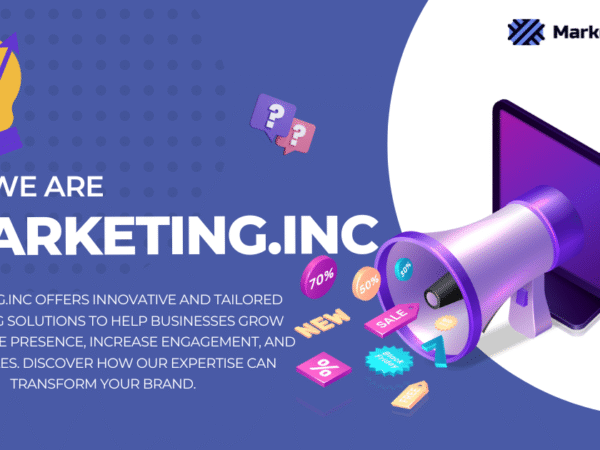In today’s fast-paced and competitive business world, personalization has emerged as a critical factor in creating exceptional customer experiences. By customizing interactions, offerings, and services based on individual customers’ needs and preferences, companies can establish stronger relationships with their customers and strengthen customer loyalty. This tailored approach to marketing not only enhances customer satisfaction but also leads to an increase in revenue growth. The importance of personalization cannot be overstated, and businesses that don’t prioritize it risk falling behind in an increasingly demanding market.
Here are some key aspects and strategies for harnessing the power of personalization to create customized customer experiences:
Table of content
- Collect and analyze customer data
- Develop customer personas
- Customize products and services
- Personalize marketing communications
- Implement dynamic website experiences
- Enable self-service personalization
- Offer personalized customer support
- Continuously iterate and improve
1. Collect and analyze customer data
There’s no question that personalized experiences drive customer loyalty and revenue. But how can businesses create such experiences? The answer lies in customer data. Collecting and analyzing customer data is essential in understanding customers’ needs, preferences, behaviours, and feedback. The more data businesses gather and analyze, the more insights they’ll have about individual customers, allowing them to identify patterns and trends. With advanced analytics and machine learning, businesses can take things to the next level, making data-driven decisions that help drive conversions, revenue, and overall success. By investing in customer data analysis, businesses can unlock their full potential and create long-lasting relationships with customers.
2. Develop customer personas
To truly connect with your target audience, you need to understand them inside and out. That’s where customer personas come in. These fictional yet data-driven representations of different customer segments can help you get to know your customers in a way that goes beyond basic demographics. By uncovering their unique characteristics, preferences, and pain points, you can identify the most effective ways to connect with them. From crafting targeted marketing messages to developing customized products and services, customer personas can take your business to the next level by putting your customers at the center of everything you do.
3. Customize products and services
Customers expect personalization and customization to meet their unique needs and preferences. That’s why it’s crucial to utilize customer insights to provide tailored recommendations, product configurations, and packaging options. By doing so, businesses can create a more personalized and memorable experience for their customers. Take e-commerce platforms as an example; they use browsing and purchase history to suggest relevant products to their customers. Similarly, software applications can offer personalized onboarding experiences based on user preferences. This not only makes the customer feel valued but also increases the likelihood of repeat purchases and long-term loyalty.
4. Personalize marketing communications
Instead of generic mass emails or advertisements, personalize your marketing communications to resonate with individual customers. Utilize segmentation and automation tools to send targeted messages based on customer preferences, past interactions, or specific milestones. Address customers by their names, tailor content to their interests, and create a sense of individual attention.
5. Implement dynamic website experiences
The key to achieving customer engagement online is by delivering personalized website experiences. This is where dynamic website experiences come into play. By using data such as browsing behavior, location, or past interactions, businesses can customize website content, recommendations, and calls to action to suit individual customer preferences and provide an intuitive browsing experience. Personalized landing pages, product recommendations, and tailored messaging are some of the ways businesses can keep their customers interested and engaged. With dynamic website experiences, companies can stand out from their competitors by providing a more relevant and customized online experience for their customers.
6. Enable self-service personalization
As consumers increasingly crave personalized experiences, businesses need to adapt and offer more options for customization. One way to do this is by enabling self-service personalization. Providing customers with the ability to customize their profiles, preferences, or settings empowers them to take control of their experiences and creates a sense of ownership over the products or services they are using. Online retailers can offer personalized product filters or saved shopping carts, making it easier for users to find what they need and pick up where they left off. Streaming services can take it a step further by utilizing user ratings and viewing history to provide personalized content recommendations, creating a truly tailored experience. Ultimately, providing self-service personalization not only satisfies customers’ desire for autonomy but also enhances their overall experience.
7. Offer personalized customer support
As businesses continue to evolve and adapt to the needs of their customers, personalized customer support is becoming increasingly important. By tapping into customer data and interactions, companies can provide tailored solutions and recommendations that cater to individual needs. This level of personalization can extend to the support channels as well, with live chat and chatbots being customized to suit specific customer inquiries and concerns. By offering personalized customer support, businesses can develop a stronger relationship with their customers and increase their loyalty to the brand. So, why not enhance your customer support today and start delivering customized solutions?
8. Continuously iterate and improve
Businesses must continuously iterate and improve to keep up with the ever-changing needs and wants of their customers to achieve personalization. Collecting feedback and measuring the impact of personalized experiences is crucial in tailoring your strategies to meet your customers’ needs. Leveraging data analytics is also necessary to identify areas for improvement and implement iterative changes. By continuously refining your personalization efforts, you can create a seamless customer experience that builds brand loyalty and generates positive outcomes for your business. Together, let’s work our way towards enhancing personalization efforts and securing long-term success.
Final thought
As businesses strive to build stronger relationships with their customers, personalization has become a popular tool to create customized experiences that drive engagement and promote loyalty. However, it’s essential to ensure these efforts are conducted ethically, with the customer’s consent, to avoid violating privacy and data protection regulations. By prioritizing transparency and openness about data usage, businesses can foster trust with their customers, leading to long-lasting relationships and increased customer satisfaction. If you’re looking to leverage the power of personalization but aren’t sure where to start, don’t hesitate to reach out for help from our experts.








